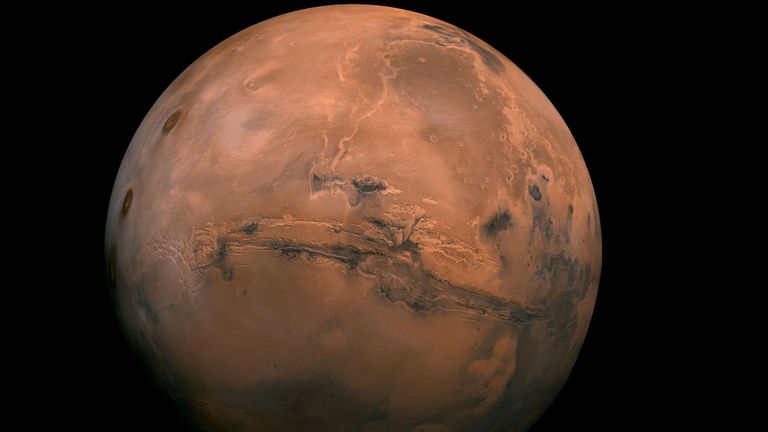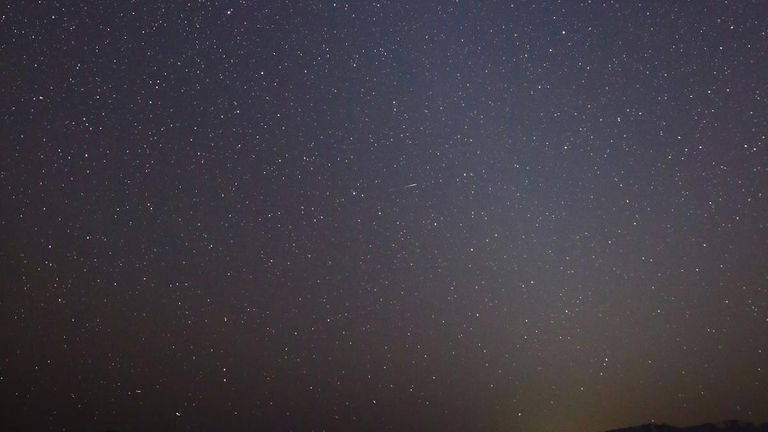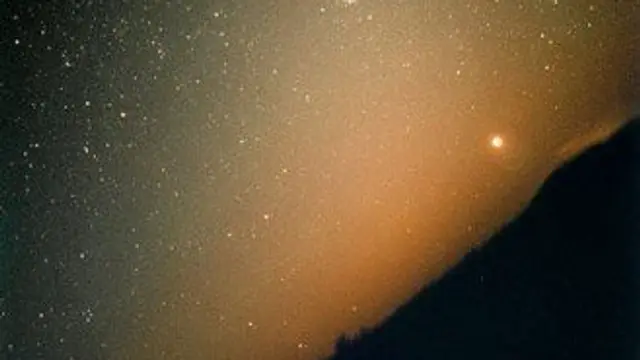The mysterious zodiacal light - a faint and diffused glow visible in the night sky in the direction of the Sun, also known as the false dawn - has fascinated humans for centuries. Now NASA thinks it has solved the mystery of where it comes from.
The light was investigated by the astronomer Giovanni Cassini in 1683 and even described by the Islamic Prophet Muhammad in the Koran. It was recently believed to be sunlight reflected by a cloud of dust particles orbiting the sun.
But new data from NASA's Juno spacecraft, which journeyed to the gas giant Jupiter, has suggested that the dust actually originated from Mars, which is shedding particles into interplanetary space.

Image:The dust is being shed by the planet Mars, say researchers
One of the instruments aboard Juno happened to detect dust particles slamming into the spacecraft as it travelled to Jupiter, with the findings appearing in the Journal of Geophysical Research: Planets.
The impacts provided important clues about the origin of the dust and the orbital evolution of the dust cloud, solving some of the mysteries about how and why the zodiacal light can vary so much.
The significant implications of the discovery came as a surprise to the scientists who have spent years studying cosmic debris.
As Professor Leif Jorgensen at the Technical University of Denmark said: "I never thought we'd be looking for interplanetary dust."
Prof Jorgensen had designed the four instruments that Juno used to track stars as part of its magnetometer investigation.
NASA explained that these onboard cameras took photographs of the sky every quarter of a second to determine Juno's orientation in space by recognising the patterns of the stars - an engineering task which was "essential" to the magnetometer's accuracy.

Image:The so-called 'zodiac light' is a column of light visible in the night sky
The professor hoped his cameras might also catch sight of an undiscovered asteroid, and so he programmed one camera to report things that appeared in multiple consecutive images but were not in the catalogue of stars and other celestial objects humanity already knows about.
The results shocked him. The camera aboard Juno started beaming down thousands of images of unidentifiable objects - streaks of light appearing then mysteriously disappearing into space - leaving Prof Jorgensen and his colleagues baffled.
"We were looking at the images and saying, 'what could this be?'. We thought, 'something is really wrong'. The images looked like someone was shaking a dusty tablecloth out their window," he said.
But when the researchers calculated the apparent size and velocity of the objects in the images, they realised what they were looking at - tiny dust grains smashing into Juno at about 10,000 miles (or 16,000km) per hour, chipping off submillimetre pieces of the spacecraft.
"Even though we're talking about objects with only a tiny bit of mass, they pack a mean punch," said NASA's Jack Connerney, Juno's magnetometer investigation lead and the mission's deputy principal investigator.
It turned out that the spray of debris was coming from Juno's expansive solar panels, which functioned as the biggest and most sensitive dust detectora ever built, even though that wasn't their purpose.
On Earth, the zodiacal light can vary - sometimes appearing to be very strong, and sometimes appearing even more faint and diffuse. The researchers successfully tied its appearance to Mars's orbit - the dustiest planet that humanity knows of.
This was a radical revelation for the scientists, who realised that the dust cloud ends at Earth because Earth's gravity sucks up all the dust that gets near it.
"That's the dust we see as zodiacal light," Prof Jorgensen explained - although another mystery remains: How does the dust escape Martian gravity? The researchers hope other scientists will investigate.
 简体中文
简体中文

